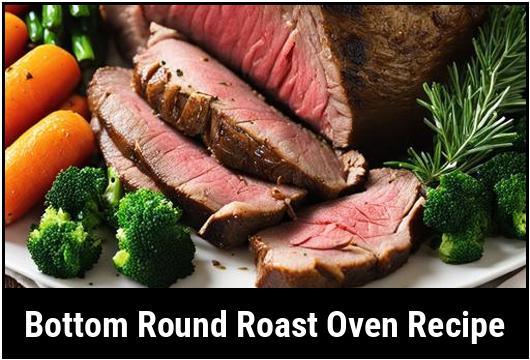
Bottom Round Roast Oven Recipe: A Mouthwatering Delight
Are you ready to embark on a delectable culinary journey featuring the tender and flavorful bottom round roast? Look no further! In this comprehensive guide, we will explore the food science behind this marvelous cut, along with every aspect of selection, cleaning, preparation, tips, variations, doneness checks, and a tantalizing recipe. Get your taste buds ready for an unforgettable experience!
Understanding the Food Science Behind Bottom Round Roast
Before we dive into the details, it’s essential to understand the science behind the bottom round roast. Derived from the hindquarters of the cow, this cut consists of well-exercised muscles, resulting in lean meat with robust flavor. However, it can be slightly tough due to the reduced fat content compared to other cuts. Fear not! With the right cooking techniques, you can transform this lean beauty into a succulent masterpiece.
Selecting the Perfect Bottom Round Roast
To ensure a delicious outcome, it is crucial to select the right bottom round roast. When visiting your local butcher or supermarket, keep these pointers in mind:
-
Freshness is Key: Opt for fresh cuts that have a vibrant red color. Avoid meat that appears brownish or discolored.
-
Marbling: Look for thin streaks of fat within the roast, as they help maintain moisture and impart flavor during cooking.
-
Size and Shape: Choose a roast that suits your needs. While small roasts are ideal for smaller families or intimate gatherings, larger roasts are perfect for feeding a crowd.
Cleaning and Preparing the Bottom Round Roast
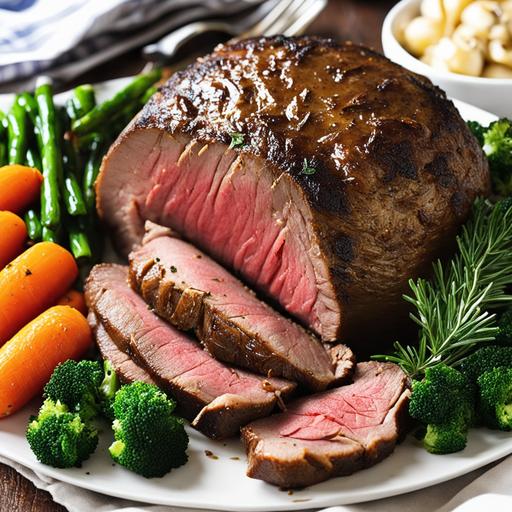
Cleaning and preparing the bottom round roast is an essential step to enhance its flavors. Follow these guidelines to get started:
-
Unpacking: Once you have your roast, remove it from any packaging and assess its condition. If there is excessive moisture in the packaging, pat the roast dry with paper towels.
-
Trimming: Trim any excess fat or connective tissue from the surface. Leave a thin layer intact, as it adds moisture and flavor to the roast.
-
Seasoning: Sprinkle kosher salt and freshly ground black pepper generously over all sides of the roast. Feel free to add other herbs and spices that complement your taste preferences. Allow the roast to rest at room temperature for approximately 30 minutes, allowing the flavors to meld.
The Secrets to a Perfectly Cooked Bottom Round Roast
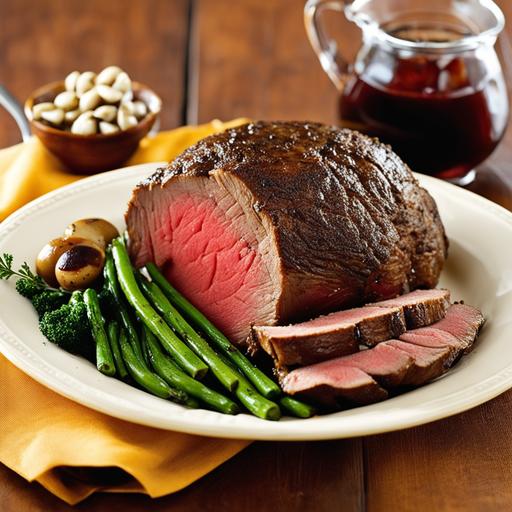
Achieving the perfect level of doneness is both an art and science. Follow these steps to ensure your bottom round roast turns out tender and juicy:
-
Preheating: Preheat your oven to 325°F (163°C). A lower temperature ensures slow and even cooking, crucial for tenderizing the lean meat.
-
Roasting Pan: Place the roast on a rack within a roasting pan. The rack promotes air circulation, allowing for uniform cooking.
-
The Cooking Time: The cooking time varies based on the roast’s size and desired degree of doneness. As a general guideline, allow for approximately 20 minutes of cooking time per pound of meat.
-
Utilizing a Meat Thermometer: To achieve perfection, a meat thermometer is your best friend. Insert the thermometer into the thickest part of the roast without touching the bone, and remove it from the oven once it reaches your desired doneness:
-
Medium-Rare: 130°F (54°C) for a hint of pink in the center.
-
Medium: 140°F (60°C) for a slightly pink center.
-
Medium-Well: 150°F (65°C) for a slightly pink center with reduced moisture.
-
Well-Done: 160°F (71°C) for meat fully cooked through.
-
-
Resting Period: Once the roast reaches the desired doneness, remove it from the oven and tent it loosely with aluminum foil. Allow it to rest for 15-20 minutes to allow the juices to redistribute and ensure moist and tender slices.
Tips and Variations for an Extraordinary Bottom Round Roast
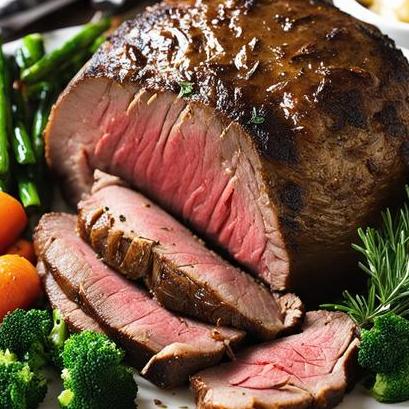
To take your bottom round roast to the next level, consider these delightful tips and variations:
-
Marinating: For added tenderness and unique flavors, marinate the roast overnight before cooking. Use a mixture of your favorite herbs, spices, and acidic ingredients like red wine, vinegar, or citrus juices.
-
Basting: Every 30 minutes, baste the roast with its own juices or a flavorful sauce to enhance moisture and maximize taste.
-
Accompaniments: Serve your bottom round roast with an array of delectable sides. From creamy mashed potatoes to roasted vegetables or a tangy horseradish sauce, the options are endless.
-
Leftover Magic: Don’t fret if you have leftovers! Thinly sliced bottom round roast makes an incredible addition to sandwiches and paninis. You can also use the cooked meat in stir-fries or stews for an extra punch of flavor.
Overcooked or Undercooked: How to Tackle Common Challenges
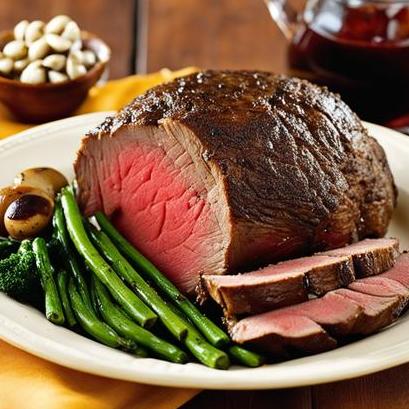
Despite our best efforts, sometimes we face challenges that lead to overcooked or undercooked roast. Here’s how to tackle each situation:
-
Overcooked: If your bottom round roast appears dry and tough due to overcooking, fear not! Thinly slicing the roast against the grain can help mitigate the tough texture. Additionally, serving it with a flavorful sauce or gravy can add moisture and enhance taste.
-
Undercooked: If you encounter an undercooked roast, there’s a simple fix. Return the roast to the oven, keeping a close eye on its internal temperature. Continue cooking until it reaches your desired level of doneness, but be cautious not to overcook it this time.
Bottom Round Roast Oven Recipe: A Classic Delight
Now that you’re well-versed in the science, selection, preparation, and cooking techniques for the perfect bottom round roast let’s delve into an exquisite recipe that will leave your guests begging for seconds:
Ingredients:
-
1 bottom round roast (3-4 pounds)
-
2 tablespoons olive oil
-
2 teaspoons kosher salt
-
1 teaspoon freshly ground black pepper
-
1 teaspoon garlic powder
-
1 teaspoon onion powder
-
1 teaspoon dried thyme
Instructions:
-
Preheat your oven to 325°F (163°C).
-
In a small bowl, combine kosher salt, black pepper, garlic powder, onion powder, and dried thyme to create a flavorful rub.
-
Rub the entire surface of the bottom round roast with olive oil, ensuring an even coating. Sprinkle the spice rub over the roast, patting it gently to adhere.
-
Place the roast on a rack in a roasting pan, then transfer it to the preheated oven.
-
Roast the meat for approximately 20 minutes per pound, or until the desired internal temperature is achieved using a meat thermometer.
-
Once the desired doneness is reached, remove the roast from the oven and tent it loosely with aluminum foil. Allow it to rest for 15-20 minutes.
-
Slice the bottom round roast against the grain into thin, tantalizing pieces, and serve with your desired accompaniments.
Whether you’re hosting a festive gathering or preparing a special meal for your loved ones, this bottom round roast oven recipe is a time-tested favorite that guarantees a satisfying experience.
In conclusion, the bottom round roast, accompanied by the correct techniques and flavors, can be transformed into a tender and succulent delicacy. From the science behind the cut to selecting the perfect piece, preparing, cooking, and even handling overcooked or undercooked roasts, we’ve covered it all. With this comprehensive guide and our delightful recipe, you are now equipped to create a mouthwatering bottom round roast that will impress any meat lover. So, gather your ingredients, embrace your inner chef, and embark on an unforgettable culinary journey!
Sources
FAQS On Bottom Round Roast Oven Recipe
What Is A Bottom Round Roast?
A bottom round roast is a cut of beef from the hindquarters of the cow. It is lean and fairly tough compared to other cuts, and is typically used for roasting, braising, or stewing.
How Do I Choose A Good Bottom Round Roast At The Grocery Store?
Look for a roast that is dark red in color with some marbling throughout. Avoid roasts with excessive fat or a strong odor. It is also helpful to choose a roast that is uniformly shaped for more even cooking.
What Is The Best Way To Season A Bottom Round Roast Before Cooking?
You can season a bottom round roast with a variety of spices and herbs, such as garlic, rosemary, thyme, and paprika. You can also marinate the roast in a mixture of oil, vinegar, and spices for added flavor.
How Long Should I Cook A Bottom Round Roast In The Oven?
The cooking time for a bottom round roast will depend on the size and weight of the roast, as well as your desired level of doneness. As a general rule, you should cook a bottom round roast at 325°F for approximately 20 minutes per pound, or until the internal temperature reaches 145°F for medium-rare, 160°F for medium, or 170°F for well-done.
How Do I Know When A Bottom Round Roast Is Done Cooking?
The best way to determine if a bottom round roast is done cooking is by using a meat thermometer. Insert the thermometer into the center of the roast and make sure it reads the desired internal temperature. You can also check for doneness by slicing into the roast and checking for a light pink color for medium-rare, a slight pink for medium, or no pink for well-done. Remember to let the roast rest for 15-20 minutes before slicing and serving to allow the juices to redistribute.



